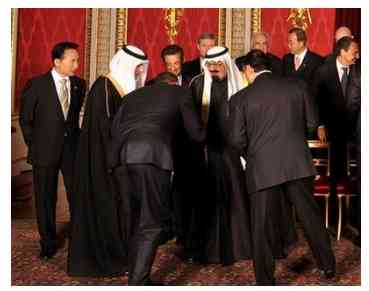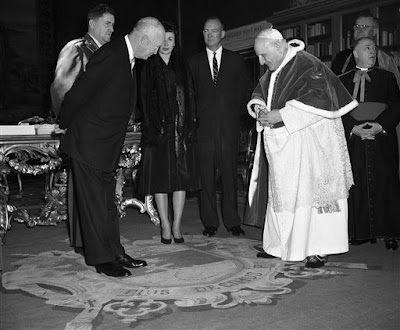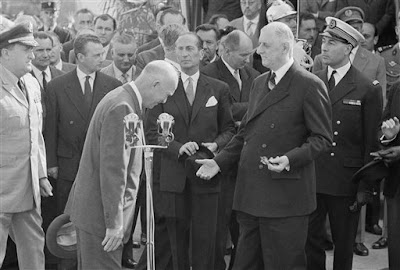You are using an out of date browser. It may not display this or other websites correctly.
You should upgrade or use an alternative browser.
You should upgrade or use an alternative browser.
The President Bows . . .
- Thread starter Bonestorm
- Start date
FUCK THE POLICE
911 EVERY DAY
A little bit late.
Cancel 2018. 3
<-- sched 2, MJ sched 1
(yawn)
not even close to the depth obama bowed....and if you don't know the difference, then you have no business speaking on the subject
not even close to the depth obama bowed....and if you don't know the difference, then you have no business speaking on the subject
Cancel 2018. 3
<-- sched 2, MJ sched 1
(yawn)
not even close to the depth obama bowed....and if you don't know the difference, then you have no business speaking on the subject


(yawn)
not even close to the depth obama bowed....and if you don't know the difference, then you have no business speaking on the subject
Oh, I see. It's a depth issue. Not a fact-that-he's-bowing issue. I guess if you only bow *this* much it doesn't really count as a bow but if you bow as much as Obama bowed then you're pretty much ceding American sovereignty to Japanese royalty or some such. Is that the gist of it?
You have to keep up with the wingnutosphere, hotshot. That was *so* six months ago. This is the latest:

signalmankenneth
Verified User

The code of etiquette in Japan governs the expectations of social behavior in the country and is considered very important.
Bowing (o)jigi (お辞儀, おじぎ), (o-)rei (お礼), is probably the feature of Japanese etiquette that is best-known outside Japan. Bowing is considered extremely important in Japan, so much so that, although children normally begin learning how to bow from a very young age, companies commonly provide training to their employees in how to execute bows correctly.
Basic bows are performed with the back straight and the hands at the sides (boys and men) or clasped in the lap (girls and women), and with the eyes down. Bows originate at the waist. Generally, the longer and deeper the bow, the stronger the emotion and the respect expressed.
Bows can be generally divided into three main types: informal, formal, and very formal. Informal bows are made at about a fifteen degree angle or just tilt over one's head to the front, and more formal bows at about thirty degrees. Very formal bows are deeper.
The etiquette surrounding bowing, including the length and depth of bow, and the appropriate response, is exceedingly complex. For example, if the other person maintains his or her bow for longer than expected (generally about two or three seconds), it is polite to bow again, upon which one may receive another bow in return. This often leads to a long exchange of progressively lighter bows.
Generally speaking, an inferior bows longer, more deeply and more frequently than a superior. A superior addressing an inferior will generally only nod the head slightly, while some superiors may not bow at all and an inferior will bend forward slightly from the waist.
Bows of apology tend to be deeper and last longer than other types of bow. They tend to occur with frequency during the apology, generally at about 45 degrees with the head lowered and lasting for at least the count of three, sometimes longer. The depth, frequency and duration of the bow increases with the sincerity of the apology and the severity of the offence.
Occasionally, in the case of apology and begging, people crouch down like Sujud to show one's absolute submission or extreme regret. This is called Dogeza. Even though Dogeza was previously considered very formal, it is mostly regarded as a contempt for oneself today, so it is not used in an everyday setting. Bows of thanks follow the same pattern. In extreme cases a kneeling bow is performed; this bow is sometimes so deep that the forehead touches the floor. This is called saikeirei (最敬礼), literally "most respectful bow."
When dealing with non-Japanese people, many Japanese will shake hands. Since many non-Japanese are familiar with the custom of bowing, this often leads to a combined bow and handshake which can be quite complicated to execute. Bows may be combined with handshakes or performed before or after shaking hands. Generally when bowing in close proximity, as necessitated when combining bowing and shaking hands, people turn slightly to one side (usually the left) to avoid bumping heads.
Cancel 2018. 3
<-- sched 2, MJ sched 1
if you don't know that the depth of a bow means anything...espcially your ignorance as to only mentioning japan....you can keep quiet on this subject....
as to that deep of a bow to the japanese...do you have any other president doing so? it shows obama is either an idiot, or he really debases himself to foreign powers....
as to that deep of a bow to the japanese...do you have any other president doing so? it shows obama is either an idiot, or he really debases himself to foreign powers....
Cancel 2018. 3
<-- sched 2, MJ sched 1

The code of etiquette in Japan governs the expectations of social behavior in the country and is considered very important.
Bowing (o)jigi (お辞儀, おじぎ), (o-)rei (お礼), is probably the feature of Japanese etiquette that is best-known outside Japan. Bowing is considered extremely important in Japan, so much so that, although children normally begin learning how to bow from a very young age, companies commonly provide training to their employees in how to execute bows correctly.
Basic bows are performed with the back straight and the hands at the sides (boys and men) or clasped in the lap (girls and women), and with the eyes down. Bows originate at the waist. Generally, the longer and deeper the bow, the stronger the emotion and the respect expressed.
Bows can be generally divided into three main types: informal, formal, and very formal. Informal bows are made at about a fifteen degree angle or just tilt over one's head to the front, and more formal bows at about thirty degrees. Very formal bows are deeper.
The etiquette surrounding bowing, including the length and depth of bow, and the appropriate response, is exceedingly complex. For example, if the other person maintains his or her bow for longer than expected (generally about two or three seconds), it is polite to bow again, upon which one may receive another bow in return. This often leads to a long exchange of progressively lighter bows.
Generally speaking, an inferior bows longer, more deeply and more frequently than a superior. A superior addressing an inferior will generally only nod the head slightly, while some superiors may not bow at all and an inferior will bend forward slightly from the waist.
Bows of apology tend to be deeper and last longer than other types of bow. They tend to occur with frequency during the apology, generally at about 45 degrees with the head lowered and lasting for at least the count of three, sometimes longer. The depth, frequency and duration of the bow increases with the sincerity of the apology and the severity of the offence.
Occasionally, in the case of apology and begging, people crouch down like Sujud to show one's absolute submission or extreme regret. This is called Dogeza. Even though Dogeza was previously considered very formal, it is mostly regarded as a contempt for oneself today, so it is not used in an everyday setting. Bows of thanks follow the same pattern. In extreme cases a kneeling bow is performed; this bow is sometimes so deep that the forehead touches the floor. This is called saikeirei (最敬礼), literally "most respectful bow."
When dealing with non-Japanese people, many Japanese will shake hands. Since many non-Japanese are familiar with the custom of bowing, this often leads to a combined bow and handshake which can be quite complicated to execute. Bows may be combined with handshakes or performed before or after shaking hands. Generally when bowing in close proximity, as necessitated when combining bowing and shaking hands, people turn slightly to one side (usually the left) to avoid bumping heads.
i see...so obama is bowing deeply solely to apologize....is this what you are saying?
FUCK THE POLICE
911 EVERY DAY
I see nothing controversial about bowing to a Japanese person. It's like getting offended about a handshake.
Cancel 2018. 3
<-- sched 2, MJ sched 1
I see nothing controversial about bowing to a Japanese person. It's like getting offended about a handshake.
so all bows are equal in japan.....?
TuTu Monroe
A Realist
i see...so obama is bowing deeply solely to apologize....is this what you are saying?
That was a WOW bow!!
Cancel 2018. 3
<-- sched 2, MJ sched 1
Jeebus, can't you guys get pissed off about something that actually matters? Good, god, the faux outrage is getting lame.
Newsflash! There's ACTUAL SHIT TO BE PISSED ABOUT!!1!
do you even know what a bow means to people who are not the in US?
a lefty already put up a post about how different depths of bows matters after i said it did and the lefties didn't believe me....
so i ask again....do you know what bows mean in the countries obama has DEEPLY bowed to the country's leaders?
Cancel 2018. 3
<-- sched 2, MJ sched 1

The code of etiquette in Japan governs the expectations of social behavior in the country and is considered very important.
Bowing (o)jigi (お辞儀, おじぎ), (o-)rei (お礼), is probably the feature of Japanese etiquette that is best-known outside Japan. Bowing is considered extremely important in Japan, so much so that, although children normally begin learning how to bow from a very young age, companies commonly provide training to their employees in how to execute bows correctly.
Basic bows are performed with the back straight and the hands at the sides (boys and men) or clasped in the lap (girls and women), and with the eyes down. Bows originate at the waist. Generally, the longer and deeper the bow, the stronger the emotion and the respect expressed.
Bows can be generally divided into three main types: informal, formal, and very formal. Informal bows are made at about a fifteen degree angle or just tilt over one's head to the front, and more formal bows at about thirty degrees. Very formal bows are deeper.
The etiquette surrounding bowing, including the length and depth of bow, and the appropriate response, is exceedingly complex. For example, if the other person maintains his or her bow for longer than expected (generally about two or three seconds), it is polite to bow again, upon which one may receive another bow in return. This often leads to a long exchange of progressively lighter bows.
Generally speaking, an inferior bows longer, more deeply and more frequently than a superior. A superior addressing an inferior will generally only nod the head slightly, while some superiors may not bow at all and an inferior will bend forward slightly from the waist.
Bows of apology tend to be deeper and last longer than other types of bow. They tend to occur with frequency during the apology, generally at about 45 degrees with the head lowered and lasting for at least the count of three, sometimes longer. The depth, frequency and duration of the bow increases with the sincerity of the apology and the severity of the offence.
Occasionally, in the case of apology and begging, people crouch down like Sujud to show one's absolute submission or extreme regret. This is called Dogeza. Even though Dogeza was previously considered very formal, it is mostly regarded as a contempt for oneself today, so it is not used in an everyday setting. Bows of thanks follow the same pattern. In extreme cases a kneeling bow is performed; this bow is sometimes so deep that the forehead touches the floor. This is called saikeirei (最敬礼), literally "most respectful bow."
When dealing with non-Japanese people, many Japanese will shake hands. Since many non-Japanese are familiar with the custom of bowing, this often leads to a combined bow and handshake which can be quite complicated to execute. Bows may be combined with handshakes or performed before or after shaking hands. Generally when bowing in close proximity, as necessitated when combining bowing and shaking hands, people turn slightly to one side (usually the left) to avoid bumping heads.
for you lefties.....once again....and i will bold it for you (instructional overall though)....since you won't believe me.....a so called rightie
signalmankenneth
Verified User
i see...so obama is bowing deeply solely to apologize....is this what you are saying?
Can't you read? Very formal bows are deeper, meeting the Emperor of Japan is a very formal affair!
who the fuck cares what japan thinks of us. They are all soy eating effeminates with almost no military. Our girls could beat up their guys. I don't think we have to worry too much about who's the submissive country.
USFREEDOM911
MAKE AMERICA GREAT AGAIN
Can't you read? Very formal bows are deeper, meeting the Emperor of Japan is a very formal affair!
Then you also have a picture of the Emperor of Japan bowing back to President Obama??

I bet you don't.

Lowaicue
英語在香港
Then you also have a picture of the Emperor of Japan bowing back to President Obama??
I bet you don't.
Of course not you twat. But there is a picture of the Jap shaking hands with Obama, which is an equally unnatural act.
You wouldn't understand it, but that is how one conducts foreign relations. Each side walks, sometimes very slowly, towards the other. Each one pays the other respect and that is what the picture shows.
For someone like you who is totally ignorant of anything outside the US and totally unaware of concepts such as respect for ones fellow humans. it must seem strange.
Tough shit. Get used to having a president who is going to make your nation better.
Typed while the Chinese masters were meeting with your president in Singapore.




